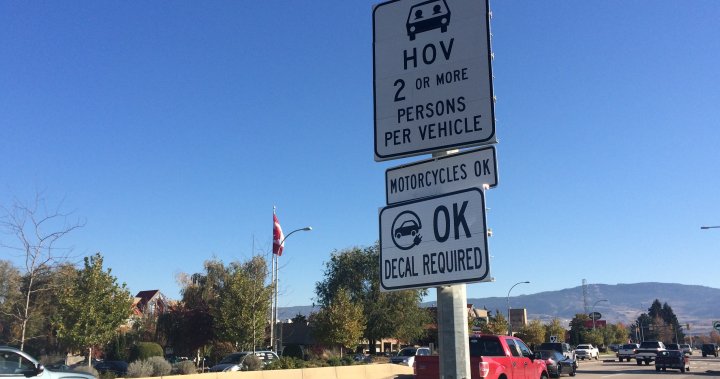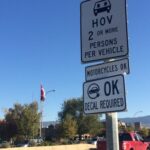Electric vehicle owners across British Columbia are waking up to a significant policy shift that eliminates a long-standing bureaucratic hurdle. As of June 1, the province has removed the requirement for zero-emission vehicles to display special decals to access high-occupancy vehicle (HOV) lanes, regardless of passenger count.
The policy change, confirmed by the Ministry of Transportation and Infrastructure, marks the end of a system that required EV drivers to apply for and display green-and-white decals to legally use HOV lanes when driving solo. The ministry indicated the decision was made to reduce administrative burden while continuing to incentivize electric vehicle adoption in the province.
“This streamlined approach removes unnecessary paperwork while maintaining the incentives that help British Columbians choose cleaner transportation options,” said a ministry spokesperson in a statement to CO24 News. “Zero-emission vehicles can now use HOV lanes without additional documentation.”
Previously, qualifying vehicle owners had to navigate an application process through the province’s clean energy vehicle program to obtain the authorization decals. The system, while effective in providing a visible identifier for enforcement, created additional steps for EV owners looking to enjoy this particular benefit.
The ministry has confirmed that enforcement officers, including police and highway patrol units, have been notified of the change. These officials will now identify eligible vehicles through the provincial vehicle registration database rather than relying on visual decal verification.
Electric vehicle advocates have largely welcomed the change. “This removes a small but sometimes frustrating barrier for EV owners,” noted Samantha Chen, president of the BC Electric Vehicle Association. “The decal system was prone to delays and created unnecessary complexity for both drivers and enforcement.”
The policy shift comes amid British Columbia’s broader push toward electrification. The province continues to lead Canada in EV adoption rates, with zero-emission vehicles accounting for approximately 22% of new light-duty vehicle sales in 2023, according to provincial data.
Transportation experts suggest the change could further incentivize EV purchases. “HOV lane access remains one of the most appealing non-financial incentives for potential electric vehicle buyers, particularly in congested urban areas,” explained Dr. Michael Reynolds, transportation policy researcher at the University of British Columbia. “Simplifying access removes a friction point in the consumer decision process.”
The ministry emphasized that this change applies only to zero-emission vehicles, which include battery electric, hydrogen fuel cell, and certain plug-in hybrid vehicles that meet provincial standards. Conventional hybrid vehicles without plug-in capability remain subject to regular HOV lane passenger requirements.
While the decal requirement has been eliminated, the ministry clarified that other HOV lane regulations remain in effect, including restrictions during certain hours and on designated routes. Drivers are advised to observe posted signage regarding HOV lane operations.
As British Columbia continues its transition toward a zero-emission vehicle future, with targets mandating 100% of new light-duty vehicle sales be zero-emission by 2035, these policy refinements reflect an evolving regulatory landscape. As these changes unfold, one question remains particularly pertinent: How will the province balance growing EV adoption with maintaining the time-saving benefits HOV lanes were originally designed to provide for carpooling and transit vehicles?










